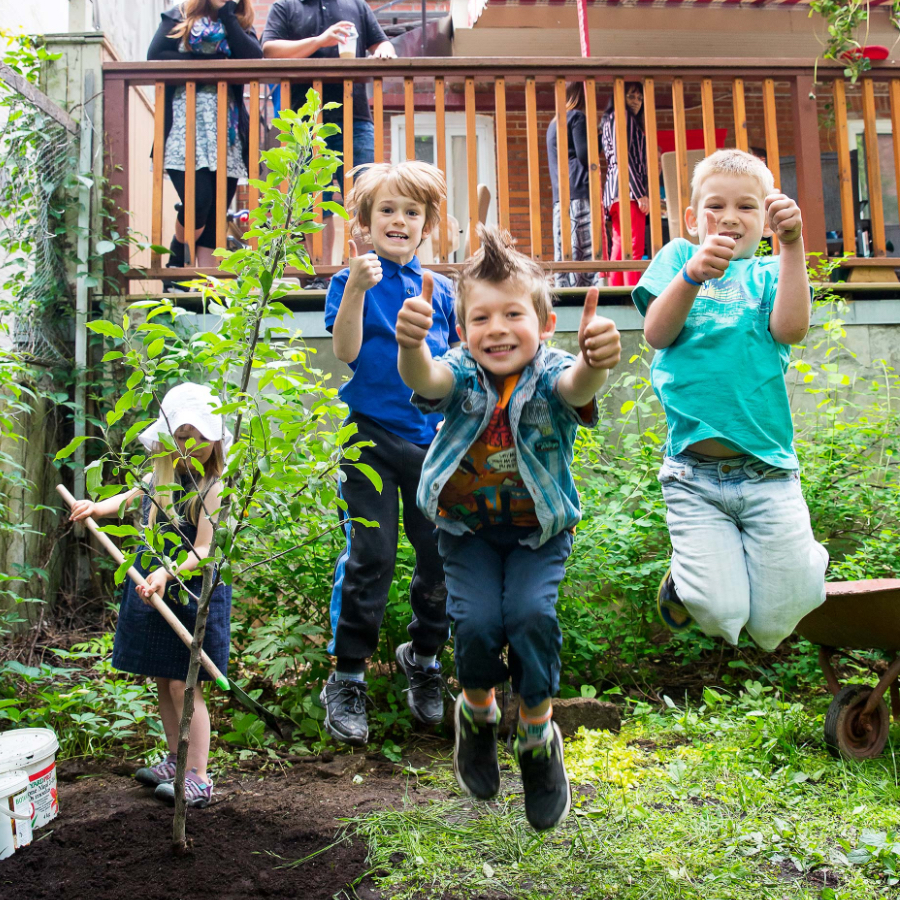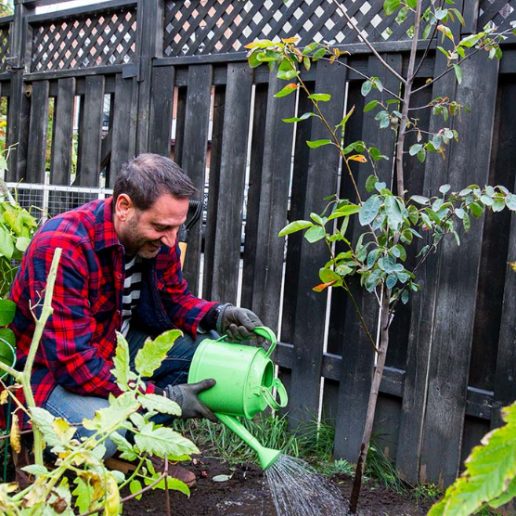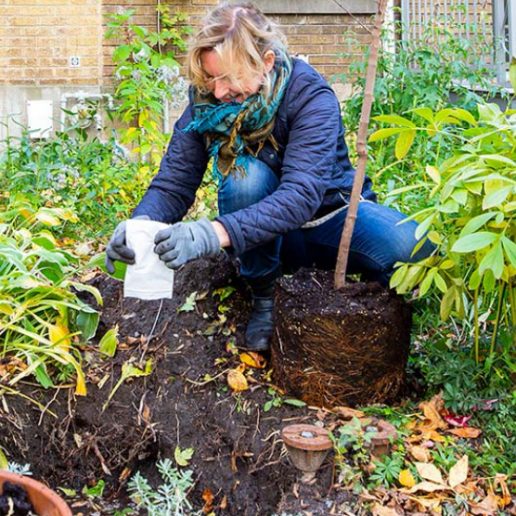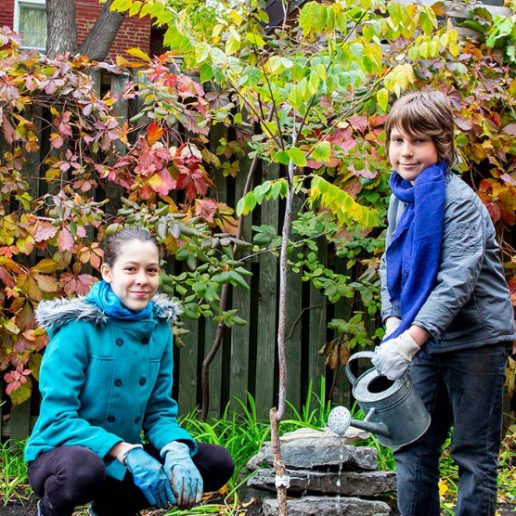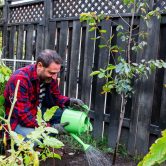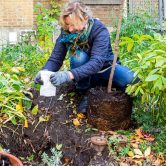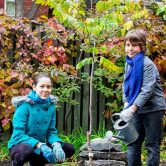Selecting the right tree – 5 things to consider
Looking to plant a tree on your property but not sure what species to choose? Here are five points to help you choose.
1. THINK ABOUT HOW THE AREA WHERE YOU WANT TO PLANT YOUR TREE GETS USED
Is there a pool or a vegetable garden nearby? If so, choose a tree with a smaller bearing or a larger tree that you can plant north of these features to avoid blocking out precious sunlight.
If your tree will be planted close to a driveway, we recommend selecting a tree that will not obstruct your view so you can manoeuvre your vehicle safely. If your parking space will be directly under the tree’s branches, make sure the tree does not produce fruit or nuts that may damage and dirty your car.
In winter, make sure that wind will not cause snow to accumulate on one side of the tree and that the trunk will be protected from snow removal equipment.
And of course, if you plan to plant next to your fence, be sure to discuss your tree choice with your neighbour.
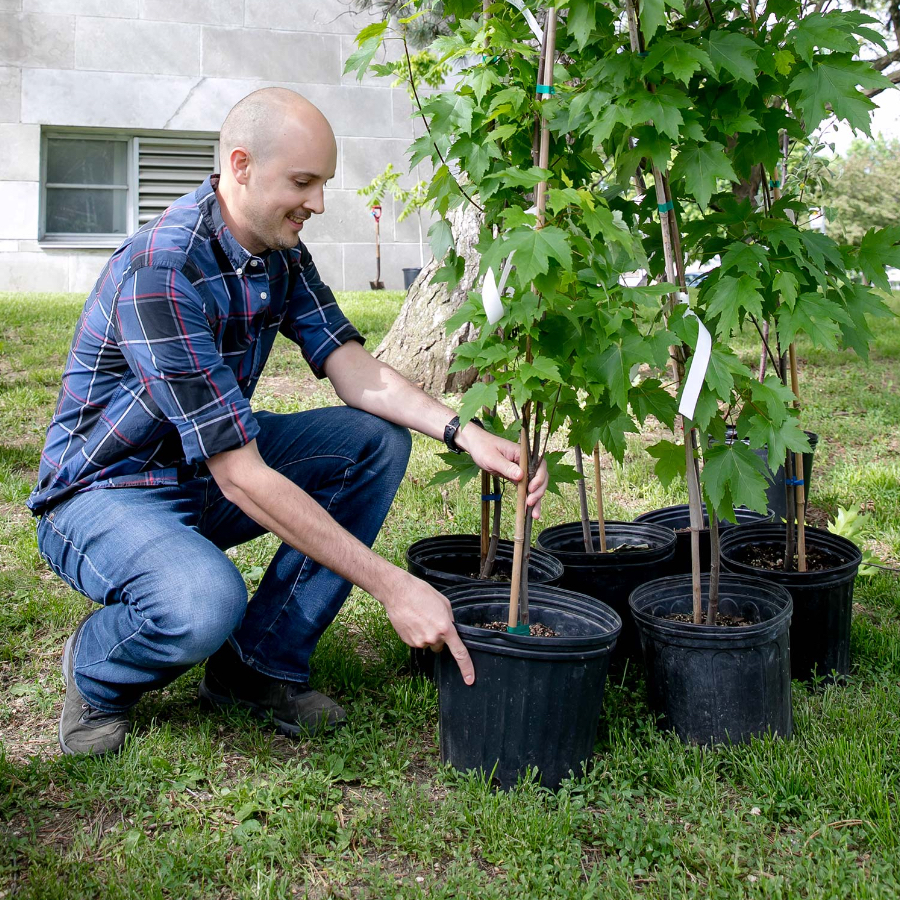
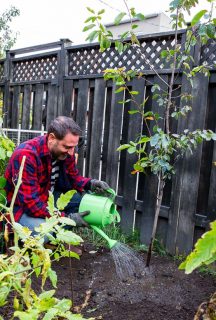
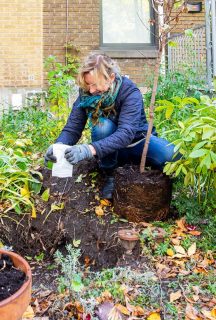
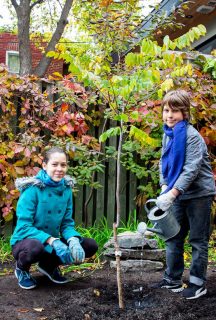
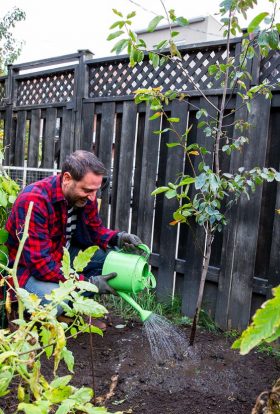
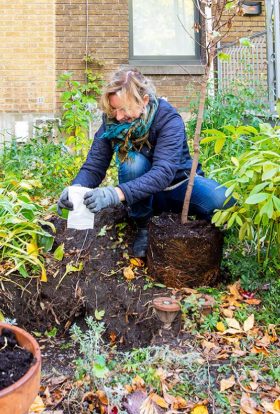
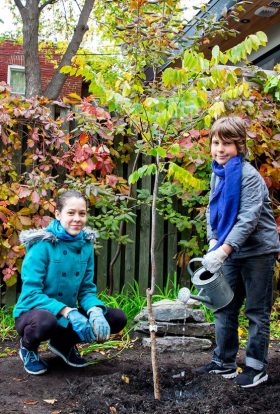
2. EVALUATE HOW MUCH SPACE IS REQUIRED AROUND THE TREE
Typically, a tree will adapt to the space it is given. However, planting a variety of large tree in a confined area (for ex., a city sidewalk bed) where the vertical space is confined as well, puts more stress on the tree and makes it more vulnerable.
In smaller spaces, you can choose a smaller size tree, such as a Serviceberry or an Amur Maple. However, it is also possible to choose a large tree, such as a Red Maple, an Oak or a Walnut, since the crown will be higher than the building when fully grown.
Please take note of objects near your potential planting location (balconies, windows, clotheslines and power lines) so your tree won’t end up in the way or compromise your safety.
3. OBSERVE SUNLIGHT CONDITIONS
To choose the best variety of tree for your location, it’s important to know how many hours of sunlight your planting site gets.
Full sun: The site is sunny for most of the day or from midday to late afternoon (a minimum of 6-8 hours of sunlight per day).
Partial shade: The site is partially sunny during the day or only gets morning sun (approximately 4-6 hours of sunlight per day).
Full shade: The site is rarely sunny during the day or only gets indirect light (approximately 2-4 hours of sunlight per day).
4. EVALUATE YOUR SOIL TYPE
Does the soil dry quickly after a rainfall or stay damp for a long time? Some trees prefer well-draining soil, while others prefer humid soil.
5. Ask yourself what you really want
Your tree will be a part of your daily life, and its shape, blooms, edible fruits and nuts, as well as autumn foliage are all important factors to consider. A fruit tree is wonderful if you enjoy harvesting and eating fruit, but may be a messy nuisance if not.
In addition, lifespan varies greatly according to tree species. Fruit trees generally have a relatively short life expectancy (50-100 years, on average) whereas oak trees can live for several hundred years.
There’s almost always an option that will work for your yard! It’s simply a question of finding the right species for your yard!
